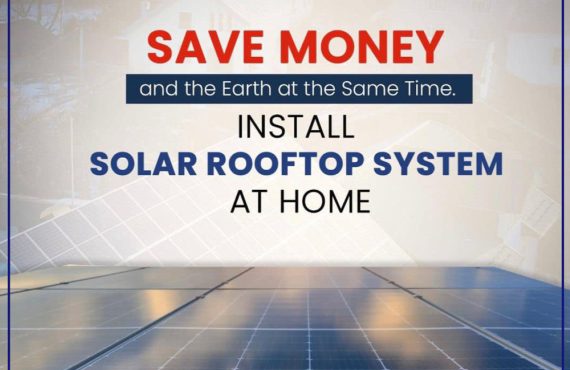Harnessing the Sun's Power: Rooftop Solar Panels for Home
In recent years, there has been a growing interest in renewable energy sources, and one technology that has gained significant attention is rooftop solar power systems. Harnessing the sun’s energy through rooftop solar panels has become a viable option for homeowners seeking to reduce their carbon footprint and lower their energy bills. In this blog, we will explore the benefits, working principles, and considerations of installing a rooftop solar power system for your home.
The Benefits of Rooftop Solar Power Systems
-
The Benefits of Rooftop Solar Power Systems
1.1 Environmental Benefits
Rooftop solar power systems provide a clean and renewable energy source, helping to reduce greenhouse gas emissions and combat climate change. By generating electricity from sunlight, homeowners can significantly reduce their reliance on fossil fuels, contributing to a cleaner and more sustainable future.
1.2 Financial Savings
Installing rooftop solar panels can lead to substantial savings on your energy bills. Once the initial investment is made, the energy generated from the sun is essentially free. Depending on factors such as your location, solar panel efficiency, and local energy costs, homeowners can even earn credits by feeding excess energy back into the grid through net metering programs.
1.3 Energy Independence
Rooftop solar power systems provide home owners with energy independence. By generating your own electricity, you are less susceptible to rising energy costs and potential power outages. Tata Solar Power Systems offer a reliable and continuous source of energy, especially when combined with energy storage solutions such as solar batteries.
-
How Rooftop Solar Panels Work
Rooftop solar panels are made up of photovoltaic (PV) cells, which convert sunlight into direct current (DC) electricity. Here’s a simplified breakdown of how the system works:
2.1 Capture:
Solar panels are strategically placed on your rooftop to capture sunlight throughout the day. The panels are designed to maximize exposure to the sun, typically facing south in the Northern Hemisphere.
2.2 Conversion:
Sunlight strikes the solar panels and is absorbed by the PV cells. These cells contain semiconductor materials that release electrons when exposed to sunlight, creating an electric current.
2.3 Inversion:
The DC electricity produced by the solar panels is sent to an inverter, which converts it into alternating current (AC) electricity. AC electricity is the type used by most household appliances and is compatible with the electrical grid.
2.4 Utilization:
The AC electricity is then distributed to power your home’s electrical needs. Any excess electricity generated but not consumed is directed back to the grid, usually through a process known as net metering, allowing you to earn credits for future use.
-
Considerations for Installing Rooftop Solar Panels
3.1 Roof Suitability:
Before installing solar panels, it is essential to assess your roof’s suitability for solar installation. Factors such as roof orientation, available space, shading from nearby structures or trees, and roof condition should be considered.
3.2 Cost and Return on Investment:
While the long-term financial benefits of Tata Solar Panels are significant, the initial investment cost should be taken into account. Consider obtaining multiple quotes, exploring financing options, and evaluating the potential return on investment over the system’s lifespan.
3.3 Permits and Regulations:
Check with your local authorities and utility company regarding any permits, interconnection agreements, or regulations associated with installing a rooftop solar power system. Understanding the legal requirements beforehand will help ensure a smooth installation process.
3.4 Maintenance and Warranty:
Solar panels are generally low-maintenance; however, occasional cleaning and inspection may be necessary to ensure optimal performance. Additionally, review the warranty terms and conditions to understand the coverage and duration provided by the manufacturer.
According to the MNRE, rooftop solar systems of up to 3 kW will be eligible for a 40% subsidy. For rooftop solar installations, there is a 40% subsidy for systems up to 3 kilowatts (kW) and a 20% subsidy for systems 3 kW to 10 kW.
We are pleased to announce that as a Tata Power Solar Authorized Channel Partner, the company offers a complete range of sustainable energy solutions.
Investing in rooftop solutions saves money while also helping to safeguard the environment. Solar Rooftop System For Home Or Residential Area is available from Ahmedabad Solar. Earn money and save money from your unused rooftop space.
An Authorised Channel Partner With Tata Power Solar
Rooftop solar power systems offer numerous benefits for homeowners, from reducing environmental impact to providing By Ahmedabad Solar From Ahmedabad (Gujarat).
For further information about how to install Solar Rooftop Panels or Systems for Home(Residential), Commercial & Industrial Solar Rooftop, please contact us at +91 95123 65652, +91 95123 65653, or mail us at sa***@ah************.com.




